Repetitive peripheral magnetic stimulation for impairment and disability in people after stroke
- PMID: 36169558
- PMCID: PMC9518012
- DOI: 10.1002/14651858.CD011968.pub4
Repetitive peripheral magnetic stimulation for impairment and disability in people after stroke
Abstract
Background: Repetitive peripheral magnetic stimulation (rPMS) is a non-invasive treatment method that can penetrate to deeper structures with painless stimulation to improve motor function in people with physical impairment due to brain or nerve disorders. rPMS for people after stroke has proved to be a feasible approach to improving activities of daily living and functional ability. However, the effectiveness and safety of this intervention for people after stroke remain uncertain. This is an update of the review published in 2019.
Objectives: To assess the effects of rPMS for improving activities of daily living and functional ability in people after stroke.
Search methods: We searched the Cochrane Stroke Specialised Register; the Cochrane Central Register of Controlled Trials (CENTRAL), in the Cochrane Library; MEDLINE; Embase; the Cumulative Index to Nursing and Allied Health Literature (CINAHL); PsycINFO; the Allied and Complementary Medicine Database (AMED); OTseeker: Occupational Therapy Systematic Evaluation of Evidence; the Physiotherapy Evidence Database (PEDro); Ichushi-Web; and six ongoing trial registries on 5 October 2021. We screened reference lists and contacted experts in the field. We placed no restrictions on the language or date of publication when searching the electronic databases.
Selection criteria: We included randomised controlled trials (RCTs) conducted to assess the therapeutic effect of rPMS for people after stroke. The following comparisons were eligible for inclusion: 1) active rPMS only compared with 'sham' rPMS (a very weak form of stimulation or a sound only); 2) active rPMS only compared with no intervention; 3) active rPMS plus rehabilitation compared with sham rPMS plus rehabilitation; and 4) active rPMS plus rehabilitation compared with rehabilitation only.
Data collection and analysis: Two review authors independently assessed studies for inclusion in the review. The same review authors assessed methods and risk of bias, undertook data extraction, and evaluated the certainty of the evidence using the GRADE approach. We contacted trial authors to request unpublished information if necessary. Any disagreements were resolved through discussion.
Main results: We included four trials (three parallel-group RCTs and one cross-over trial) involving a total of 139 participants. This result was unchanged from the review published in 2019. Blinding of participants and physicians was well reported in three trials, with no information on whether personnel were blinded in one trial. We judged the overall risk of bias across trials as low. Only two trials (with 63 and 18 participants, respectively) provided sufficient information to be included in the meta-analysis. We found no clear effect of rPMS on activities of daily living at the end of treatment (mean difference (MD) -3.00, 95% confidence interval (CI) -16.35 to 10.35; P = 0.66; 1 trial; 63 participants; low-certainty evidence) and at the end of follow-up (MD -2.00, 95% CI -14.86 to 10.86; P = 0.76; 1 trial; 63 participants; low-certainty evidence) when comparing rPMS plus rehabilitation versus sham rPMS plus rehabilitation. We found no statistical difference in improvement of upper limb function at the end of treatment (MD 2.00, 95% CI -4.91 to 8.91; P = 0.57; 1 trial; 63 participants; low-certainty evidence) and at the end of follow-up (MD 4.00, 95% CI -2.92 to 10.92; P = 0.26; 1 trial; 63 participants; low-certainty evidence) when comparing rPMS plus rehabilitation versus sham rPMS plus rehabilitation. We observed a decrease in spasticity of the elbow at the end of follow-up (MD -0.41, 95% CI -0.89 to 0.07; 1 trial; 63 participants; low-certainty evidence) when comparing rPMS plus rehabilitation versus sham rPMS plus rehabilitation. In terms of muscle strength, rPMS treatment was not associated with improved muscle strength of the ankle dorsiflexors at the end of treatment (MD 3.00, 95% CI -2.44 to 8.44; P = 0.28; 1 trial; 18 participants; low-certainty evidence) when compared with sham rPMS. No studies provided information on lower limb function or adverse events, including death. Based on the GRADE approach, we judged the certainty of evidence related to the primary outcome as low, owing to the small sample size of the studies.
Authors' conclusions: There is insufficient evidence to permit the drawing of any conclusions about routine use of rPMS for people after stroke. Additional trials with large sample sizes are needed to provide robust evidence for rPMS after stroke.
Copyright © 2022 The Cochrane Collaboration. Published by John Wiley & Sons, Ltd.
Conflict of interest statement
Tomohiko Kamo: none known.
Yoshitaka Wada: none known.
Masatsugu Okamura: none known.
Kotomi Sakai: none known.
Ryo Momosaki: none known.
Shunsuke Taito: none known.
Figures
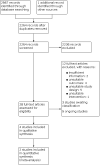
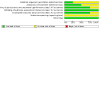
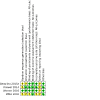
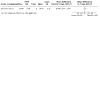
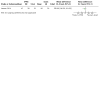
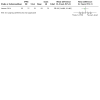
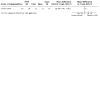
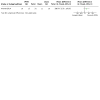
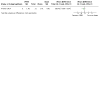
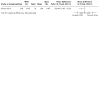
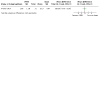
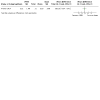
Update of
-
Repetitive peripheral magnetic stimulation for impairment and disability in people after stroke.Cochrane Database Syst Rev. 2019 Nov 30;11(11):CD011968. doi: 10.1002/14651858.CD011968.pub3. Cochrane Database Syst Rev. 2019. Update in: Cochrane Database Syst Rev. 2022 Sep 28;9:CD011968. doi: 10.1002/14651858.CD011968.pub4. PMID: 31784991 Free PMC article. Updated.
References
References to studies included in this review
Beaulieu 2015a {published data only}
-
- Beaulieu L-D, Masse-Alarie H, Brouwer B, Schneider C. Noninvasive neurostimulation in chronic stroke: a double-blind randomized sham-controlled testing of clinical and corticomotor effects. Topics in Stroke Rehabilitation 2015;22(1):8-17. - PubMed
Krewer 2014 {published data only}
-
- Krewer C, Hartl S, Muller F, Koenig E. Effects of repetitive peripheral magnetic stimulation on upper-limb spasticity and impairment in patients with spastic hemiparesis: a randomized, double-blind, sham-controlled study. Archives of Physical Medicine and Rehabilitation 2014;95(6):1039-47. - PubMed
Werner 2016 {published data only}
-
- Werner C, Schrader M. Repetitive peripheral magnetic stimulation (rpMS) in combination with muscle stretch decreased the wrist and finger flexor muscle spasticity in chronic patients after CNS lesion. International Journal of Physical Medicine and Rehabilitation 2016;4:4.
Zifko 2002 {published data only}
-
- Zifko U, Morph M, Diem K, Havel P, Struppler A. Repetitive peripheral magnetic stimulation is effective in the rehabilitation of the paretic arm. Neurorehabilitation and Neural Repair 2002;16(1):18-9.
References to studies excluded from this review
Bernhardt 2007 {published data only}
-
- Bernhardt M, Angerer B, Buss M, Struppler A. Isometric muscle contraction induced by repetitive peripheral magnetic stimulation (RPMS) - modeling and identification. Biomedical Signal Processing and Control 2007;2(3):180-90.
Chen 2020 {published data only}
Heldmann 2000 {published data only}
-
- Heldmann B, Kerkhoff G, Struppler A, Havel P, Jahn T. Repetitive peripheral magnetic stimulation alleviates tactile extinction. NeuroReport 2000;11(14):3193-8. - PubMed
Kinoshita 2020 {published data only}
Kuznetsova 2016 {published data only}
-
- Kuznetsova S, Kuznetsov V, Skachkova N. Enhancement of cortical excitability and motor function in stroke patients after combined repetitive transcranial and peripheral magnetic stimulation. European Journal of Neurology 2016;23:223.
Kuznietsova 2016 {published data only}
-
- Kuznietsova S, Skachkova N, Semonova O. ID 243 – Enhancement of cortical excitability in stroke patients after combined repetitive transcranial and peripheral magnetic stimulation. Clinical Neurophysiology 2016;127(3):121.
Momosaki 2014 {published data only}
-
- Momosaki R, Abo M, Watanabe S, Kakuda W, Yamada N, Mochio K. Functional magnetic stimulation using a parabolic coil for dysphagia after stroke. Neuromodulation 2014;17(7):637-41. - PubMed
Obayashi 2020 {published data only}
Rossini 2005 {published data only}
-
- Rossini PM, Johnston CS. Facilitating acute stroke recovery with magnetic fields? Neurology 2005;65(3):353-4. - PubMed
Struppler 2002 {published data only}
-
- Struppler A, Havel P, Muller-Barna P. Facilitation of skilled finger movements by repetitive peripheral magnetic stimulation (RPMS) - a new approach in central paresis. NeuroRehabilitation 2002;18(1):69-82. - PubMed
Struppler 2009 {published data only}
-
- Struppler A, Angerer B, Gebhard B. Repetitive peripheral magnetic stimulation (RPMS) as a method for the rehabilitation of sensorimotor deficits of hand and arm following cerebral lesions. Neurologie und Rehabilitation 2009;15(1):28-38.
Suzuki 2020 {published data only}
References to studies awaiting assessment
Kotchetkov 1999 {published data only}
-
- Kotchetkov A, Gorbunov F, Streltsova N, Fillina T. Spasticity modulation using low frequency magnetic fields (LFMF) in stroke patients. Neurorehabilitation and Neural Repair 1999;13:23-82.
Kuznetsova 2013 {published data only}
-
- Kuznetsova S, Kuznetsov V, Skachkova N. Combined central and peripheral magnetic stimulation to facilitate motor recovery after stroke. Cerebrovascular Diseases 2013;35 Suppl 3:548.
Samosiuk 2003 {published data only}
-
- Samosiuk NI. Magnetic and laser therapy of acute ischemic stroke. Voprosy Kurortologii, Fizioterapii, i Lechebnoi Fizicheskoi Kultury 2003;2:19-20. - PubMed
References to ongoing studies
DRKS00000798 {published data only}
-
- DRKS00000798. The effects of repetitive peripheral magnetic stimulation on motor function and spasticity in patients with hemiparesis. www.drks.de/drks_web/navigate.do?navigationId=trial.HTML&TRIAL_ID=DR... (first received 5 March 2018).
DRKS00007722 {published data only}
-
- DRKS00007722. The effect of repetitive peripheral magnetic stimulation in stroke-rehabilitation: a randomized controlled trial. www.drks.de/drks_web/navigate.do?navigationId=trial.HTML&TRIAL_ID=DR... (first received 3 March 2015).
DRKS00007899 {published data only}
-
- DRKS00007899. The effects of repetitive peripheral magnetic stimulation in patient with spastic hemiparesis after stroke: a randomized-controlled study. www.drks.de/drks_web/navigate.do?navigationId=trial.HTML&TRIAL_ID=DR... (first received 24 March 2015).
jRCTs032190191 {published data only}
-
- JPRN-jRCTs032190191. Dose-response of repetitive peripheral magnetic stimulation therapy combined with intensive occupational therapy for upper limb hemiparesis after stroke: a multi-center randomized controlled study. trialsearch.who.int/Trial2.aspx?TrialID=JPRN-jRCTs032190191 (first received 20 January 2020).
jRCTs042180014 {published data only}
-
- jRCTs042180014. Immediate effect of simple magnetic stimulation for upper limb spasticity: a randomized-controlled trial. rctportal.niph.go.jp/en/detail?trial_id=jRCTs042180014 (first received 29 November 2018).
jRCTs042180043 {published data only}
-
- jRCTs042180043. A randomized controlled trial for prevention of shoulder subluxation with magnetic stimulation. trialsearch.who.int/Trial2.aspx?TrialID=JPRN-jRCTs042180043 (first received 5 February 2019).
UMIN000018750 {published data only}
-
- UMIN000018750. Effect of repetitive peripheral magnetic stimulation for lower extremity of stroke patients with hemiplegia. upload.umin.ac.jp/cgi-open-bin/ctr/ctr.cgi?function=brows&action=bro... (first received 21 August 2015).
UMIN000019106 {published data only}
-
- UMIN000019106. Effect of pairing peripheral and transcranial magnetic stimulations triggered by actual movement on motor plasticity. upload.umin.ac.jp/cgi-open-bin/ctr_e/ctr_view.cgi?recptno=R000022085 (first received 1 October 2015).
UMIN000031957 {published data only}
-
- UMIN000031957. Prevention of shoulder subluxation in stroke patients with magnetic stimulation: a randomized controlled trial. upload.umin.ac.jp/cgi-open-bin/ctr_e/ctr_view.cgi?recptno=R000036495 (first received 29 March 2018).
Additional references
Barker 1991
-
- Barker AT. An introduction to the basic principles of magnetic nerve stimulation. Journal of Clinical Neurophysiology 1991;8:26-37. - PubMed
Beaulieu 2013
-
- Beaulieu LD, Schneider C. Effects of repetitive peripheral magnetic stimulation on normal or impaired motor control. A review. Clinical Neurophysiology 2013;43(4):251-60. - PubMed
Beaulieu 2015b
-
- Beaulieu LD, Schneider C. Repetitive peripheral magnetic stimulation to reduce pain or improve sensorimotor impairments: a literature review on parameters of application and afferents recruitment. Neurophysiologie Clinique 2015;45(3):223-37. - PubMed
Beaulieu 2017
-
- Beaulieu LD, Massé-Alarie H, Camiré-Bernier S, Ribot-Ciscar É, Schneider C. After-effects of peripheral neurostimulation on brain plasticity and ankle function in chronic stroke: the role of afferents recruited. Neurophysiologie Clinique 2017;47(4):275-91. - PubMed
Covidence [Computer program]
-
- Veritas Health Innovation Covidence. Version accessed 2 November 2021. Melbourne, Australia: Veritas Health Innovation. Available at covidence.org.
De Vries 2007
-
- De Vries S, Mulder T. Motor imagery and stroke rehabilitation: a critical discussion. Journal of Rehabilitation Medicine 2007;39(1):5-13. - PubMed
Flamand 2014
-
- Flamand VH, Schneider C. Noninvasive and painless magnetic stimulation of nerves improved brain motor function and mobility in a cerebral palsy case. Archives of Physical Medicine and Rehabilitation 2014;95(10):1984-90. - PubMed
Gallasch 2015
GRADEpro GDT [Computer program]
-
- McMaster University (developed by Evidence Prime) GRADEpro GDT. Version accessed 2 November 2021. Hamilton (ON): McMaster University (developed by Evidence Prime). Available at gradepro.org.
Guyatt 2008
Han 2006
-
- Han TR, Shin HI, Kim IS. Magnetic stimulation of the quadriceps femoris muscle: comparison of pain with electrical stimulation. American Journal of Physical Medicine & Rehabilitation 2006;85(7):593-9. - PubMed
Higgins 2011
-
- Higgins JP, Green S, editor(s). Cochrane Handbook for Systematic Reviews of Interventions Version 5.1.0 (updated March 2011). The Cochrane Collaboration, 2011. Available from training.cochrane.org/handbook/archive/v5.1/.
Ito 2013
-
- Ito T, Tsubahara A, Watanabe S. Use of electrical or magnetic stimulation for generating hip flexion torque. American Journal of Physical Medicine & Rehabilitation 2013;92:755-61. - PubMed
Kerkhoff 2001
-
- Kerkhoff G, Heldmann B, Struppler A, Havel P, Jahn T. The effects of magnetic stimulation and attentional cueing on tactile extinction. Cortex 2001;37(5):719-23. - PubMed
Krause 2008
-
- Krause P, Straube A. Peripheral repetitive magnetic stimulation induces intracortical inhibition in healthy subjects. Neurological Research 2008;30(7):690-4. - PubMed
Langhorne 2009
-
- Langhorne P, Coupar F, Pollock A. Motor recovery after stroke: a systematic review. Lancet Neurology 2009;8(8):741-54. - PubMed
McArthur 2011
-
- McArthur KS, Quinn TJ, Higgins P, Langhorne P. Post-acute care and secondary prevention after ischaemic stroke. BMJ 2011;342:d2083. - PubMed
Moher 2009
-
- Moher D, Liberati A, Tetzlaff J, Altman DG. Preferred Reporting Items for Systematic reviews and Meta-Analyses: the PRISMA statement. Annals of Internal Medicine 2009;151(4):264-9. - PubMed
Nielsen 1996
-
- Nielsen JF, Sinkjaer T, Jakobsen J. Treatment of spasticity with repetitive magnetic stimulation: a double-blind placebo-controlled study. Multiple Sclerosis Journal 1996;2(5):227-32. - PubMed
Park 2012
Review Manager 2020 [Computer program]
-
- Nordic Cochrane Centre, The Cochrane Collaboration Review Manager 5 (RevMan 5). Version 5.4. Copenhagen: Nordic Cochrane Centre, The Cochrane Collaboration, 2020.
Ryan 2016
-
- Ryan R, Hill S. How to GRADE the quality of the evidence: Cochrane Consumers and Communication Group. cccrg.cochrane.org/author-resources (accessed 2 November 2021).
Sacco 2013
Strong 2007
-
- Strong K, Mathers C, Bonita R. Preventing stroke: saving lives around the world. Lancet Neurology 2007;6(2):182-7. - PubMed
Struppler 2003
-
- Struppler A, Havel P, Müller-Barna P. Facilitation of skilled finger movements by repetitive peripheral magnetic stimulation (RPMS) - a new approach in central paresis. NeuroRehabilitation 2003;18:69-82. - PubMed
Struppler 2004
-
- Struppler A, Angerer B, Gündisch C, Havel P. Modulatory effect of repetitive peripheral magnetic stimulation on skeletal muscle tone in healthy subjects: stabilization of the elbow joint. Experimental Brain Research 2004;157:59-66. - PubMed
Struppler 2007
-
- Struppler A, Binkofski F, Angerer B, Bernhardt M, Spiegel S, Drzezga A, et al. A fronto-parietal network is mediating improvement of motor function related to repetitive peripheral magnetic stimulation: a PET-H2O15 study. Neuroimage 2007;36(2):T174-86. - PubMed
WHO 1989
-
- World Health Organization. Recommendations on stroke prevention, diagnosis, and therapy. Report of the WHO Task Force on Stroke and Other Cerebrovascular Disorders. Stroke 1989;20(10):1407-31. - PubMed
Zheng 2015
-
- Zheng C-J, Liao W-J, Xia W-G. Effect of combined low-frequency repetitive transcranial magnetic stimulation and virtual reality training on upper limb function in subacute stroke: a double-blind randomized controlled trial. Journal of Huazhong University of Science and Technology 2015;35(2):248-54. - PubMed
References to other published versions of this review
Publication types
MeSH terms
LinkOut - more resources
Full Text Sources
Medical

